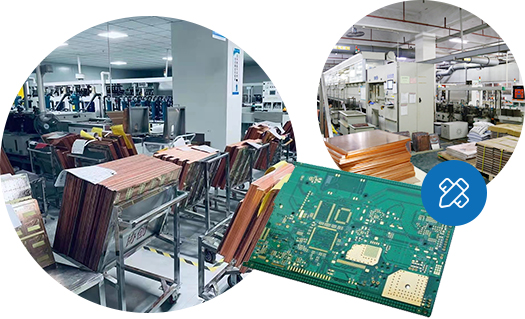Time:2022-08-19 Visit:
With the high-density interconnection design of PCB circuit boards and the improvement of electronic technology, carbon dioxide (CO2) laser processing equipment has become an important tool for circuit board manufacturers to process micro-holes on PCB circuit boards. The development of laser processing PCB micro-hole technology has also improved rapidly. . Let's learn more about it with Xiaobian~

At present, some large-scale printed circuit board manufacturers in China are gradually using carbon dioxide (CO2) laser and UV laser hole-forming technology to process build-up PCB multilayer boards with higher-density interconnections. To improve, carbon dioxide (CO2) laser processing hole method has been rapidly popularized and widely used in PCB multilayer circuit boards. And further promote the build-up multilayer board to the field of flip-chip packaging, thereby promoting the development of the build-up multilayer board to a higher density. As a result, the number of blind hole processing holes in the multi-layer PCB multi-layer board is increasing, and its single side is generally about 20,000 to 70,000 holes, or even as high as 100,000 holes or more. : For such a large number of blind vias, in addition to the above-mentioned photolithography and plasma methods to manufacture blind vias, especially as the aperture of blind vias becomes smaller and smaller, carbon dioxide (CO2) laser and UV Laser processing to manufacture blind vias is one of the low-cost, high-speed processing methods that circuit board manufacturers can achieve.
In the late 1980s, the AT&T circuit board R&D department developed carbon dioxide laser processing equipment to perform micro-hole processing on epoxy glass FR-4 manufacturing PCB circuit boards. Because the infrared wavelength of 10.60um is used, the copper skin on the surface of the circuit board cannot be ablated (because the metal copper has a very low infrared absorption rate), and organic carbides will be left on the surface of the inner copper (bottom copper), and the dielectric The glass fiber cloth (filament) in the layer is not easy to burn or leave a molten state (glass has a very low infrared absorption rate), so it must be carefully treated before plating the hole, otherwise it will cause hole plating problems or cause hole wall. The roughness is large, so it has not been promoted and applied in the PCB industry. Then IBM and Simens developed gaseous lasers, such as excimer lasers such as argon lasers, krypton lasers, and xenon lasers, with laser wavelengths ranging from 193nm to 308nm (nanometers). Although it can effectively avoid the carbonization phenomenon of rabbit organic matter and the problem of glass protruding melting head, but because of the need for special inert gas, plus the processing speed is slow, not disorderly, and the output (energy) is too low, so it is not used in the PCB. It has been widely promoted and applied in the industry. However, it can be used to effectively remove carbonized residues caused by carbon dioxide lasers, so that holes can be formed in carbon dioxide lasers, and then excimer lasers are used to remove the residues to ensure the quality of laser holes. Double-sided circuit board
The method of laser processing PCB circuit boards has been used in circuit board manufacturers so far. Because of the sharp increase in the micro-hole requirements of laminated PCB multi-layer boards, coupled with the refinement and perfection of carbon dioxide laser equipment and processing technology, carbon dioxide lasers have been rapidly promoted and applied. . At the same time, a more stable solid-state (bulk) laser device has been developed. After passing through multiple harmonics, it can reach the laser level of ultraviolet light, because the peak value can reach 12kw, the repetition power can be 50, and it is suitable for various Therefore, for the processing of micro-holes smaller than 0.1 microns, it is undoubtedly a kind of high-density interconnected build-up PCB multi-layer board produced by circuit board manufacturers. Promising processing methods